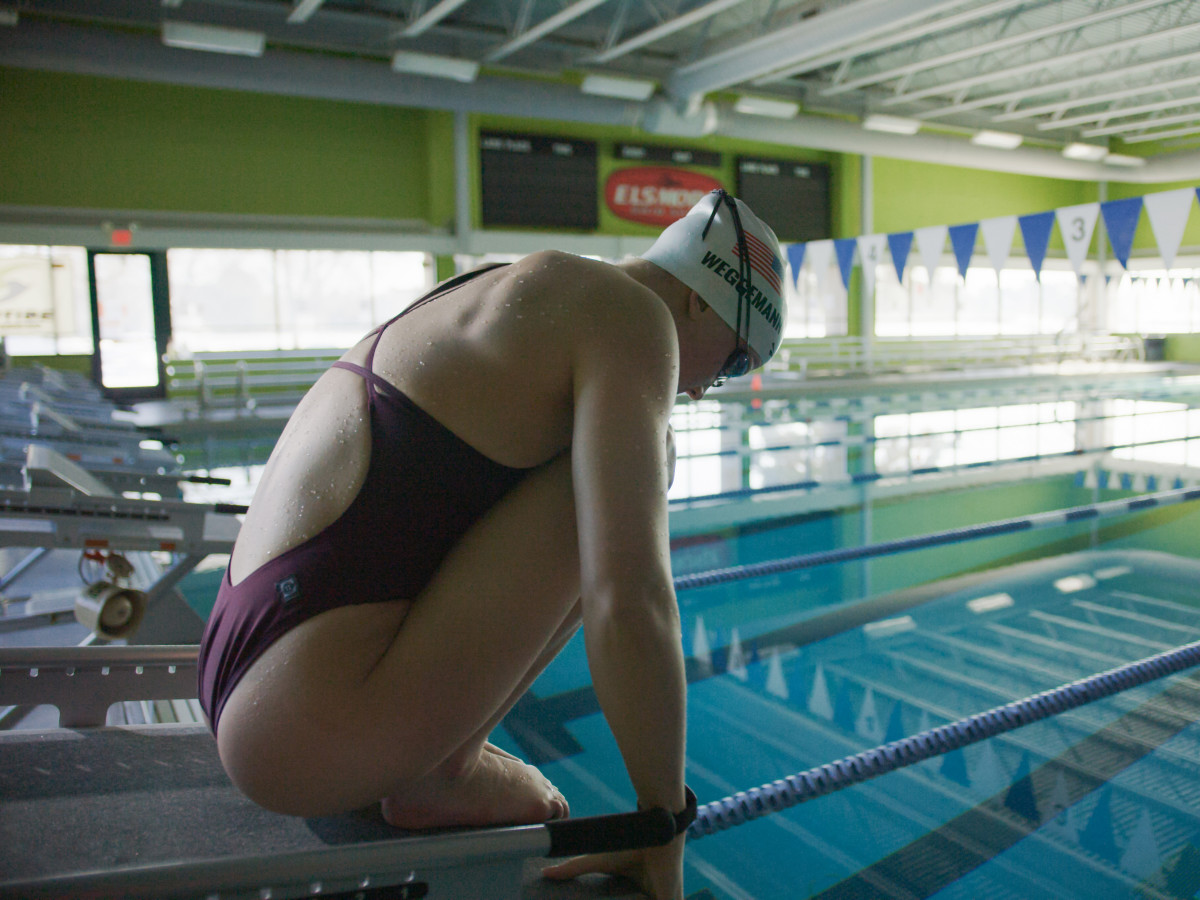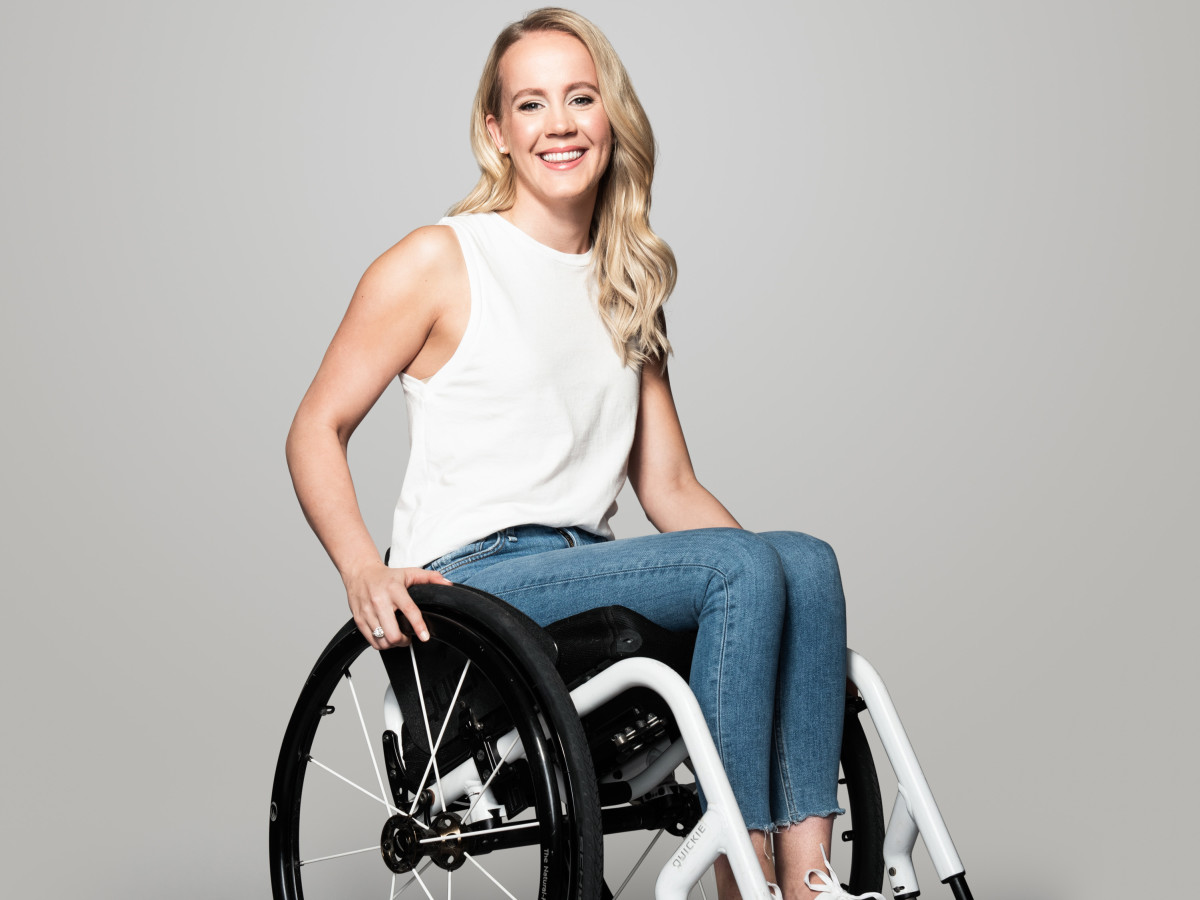Mallory Weggemann Is on a Mission to Return to the Paralympic Podium
Mallory Weggemann’s life story is a study in how to overcome setbacks.
The world first saw her remarkable resilience at the London Paralympic Games. On Sept. 2, 2012, Weggemann and seven other of the world’s top women Paralympic swimmers gathered at the London Aquatics Centre for the final of the women’s S8 classification 50-meter freestyle competition. Three days before, Weggemann—an American who had competed as a S7 Paralympic swimmer and broken world records while winning multiple gold medals at the world championships in 2010—learned that the International Paralympic Committee had reclassified her to S8, a level for swimmers with less impairment. Before the start of the 50 free in London, Weggemann was one of two competitors to make their way out onto the pool deck in a wheelchair. The other, Great Britain’s Heather Frederiksen, walked from her chair into her place on the starting blocks. All of Weggemann’s competitors had at least some use of their lower body.
Weggemann used her upper body to position herself on the starting block, then took her mark and propelled herself into the water at the sound of the starting buzzer for a one-lap, all-out sprint to the other end of the pool. At the 25-meter mark, Jiang Shengnan of China had the lead, but Australia's Maddison Elliott was closing in from her left in Lane 4. It looked like a two-person fight to the finish. But just before they touched the wall, Weggemann came flying in from her right to edge them both out and won her first gold medal—setting a Paralympic and U.S. record in the process.

“I won in the last arm stroke,” says Weggemann, who would go on to add a bronze medal in the 4x100 relay at those Games—and cement her status as a Paralympic hero and role model—with a smile. After becoming paralyzed in January 2008, she was winning a gold medal just a few years later.
“For me in that moment it was just the two extremes, going from literally the worst day of my life that completely changed how not only I functioned as a human, but how society perceived me as a person, to then sitting atop the Paralympic podium and being the best in the world in that moment at my respective craft and getting to represent my country,” she says.
Weggemann was only 19 when she became paralyzed from the waist down after a routine epidural injection during a bout of shingles went wrong. She went from preparing for her freshman year at Gardner-Webb University to being unable to walk.
Two and a half months later, her oldest sister, Christin, took her to the 2008 U.S. Paralympic Team Trials at the University of Minnesota. Mallory had been captain of her high school swim team in the Minneapolis suburb of Eagan. As she watched the athletes—all of whom had either physical or cognitive disabilities—compete for an opportunity to represent the United States, Weggemann was intrigued.
“I looked at my sister and said, ‘How cool would it be if I could be here in four years?’ ” Weggemann says. “And that has kind of been marked as the day that the dream was born.”
After meeting a club coach from the University of Minnesota who offered to train her, Weggemann returned to the pool less than a week later. A powerful leg kick had been Weggeman’s signature move before she was paralyzed. Learning to swim without the use of her legs was a series of fits and starts. When she started racing again, she was routinely beaten by 9-year-olds.
But she gradually relearned how her body worked, how to rely on her upper body—and how to navigate life in and out of the pool.
“After my injury, I really learned, as simple and silly as it sounds, how to take baby steps,” says Weggeman, now 32. “Everything was broken down to doing the most basic tasks again for the first time—getting dressed, putting on shoes, being able to get in and out of bed on my own.”
In the pool, she had to learn how to stay buoyant in the water, how to generate speed without the use of her legs. In addition to getting her body physically ready to compete, Weggemann had to retrain her mind. Swimming helped, as it gave her a way to connect with who she was before the injury. The first time she went in public after her paralysis, she didn’t see a single other person in a wheelchair. She felt alone.
As she grew more comfortable in her body and learned all the things she could still do, she vowed to become someone in whom other people could see themselves. A role model who could show others how to overcome their own setbacks.
“We all carry circumstance in our life,'' she says. “We’ve all carried hardship. We’ve all moved ourselves through trauma and loss, but we are more than our circumstance.”
As she started winning more and more races, Weggeman set her sights on winning nine gold medals at the 2012 Games. After the IPC’s decision to reclassify her—which she could not appeal—she decided to focus on winning the 50 free. And she learned what she was capable of when the odds were stacked even higher against her.
“When I won my medal in London at the 2012 Games I was in fifth or sixth place at the 25-meter mark, halfway through a 50-meter race, looking at the feet of the woman in the lane next to me,” she says. “I could have mentally let myself fold and give up, or I could fight with everything I had for every last inch of the pool.”
But shortly after her triumph in London, she suffered another devastating setback. While showering in a hotel in New York City in March 2014, Weggemann injured her left arm after the ADA shower bench she was using came unscrewed from the wall and collapsed beneath her. Her arm smashed onto the shower surface, damaging the nerves from her elbow down. She lost 75% of function in her arm and her ability to grip.
The injury kept her out of the pool for six months and jeopardized her training for the 2016 Paralympic Games in Rio. Weggemann was forced to miss the ’14 Pan Pacific Championships, which would have been her first major international competition since London. Some doctors recommended that she retire, telling her the injury to her arm would be permanent.
Weggemann considered it, but decided that she was not done. With the help of a brace and countless hours of training and rehab, she learned how to mitigate the pain in her arm from the nerve damage. Even though her left arm remained restricted, when she returned to competition the IPC ruled Weggemann would remain at S8. So she channeled that lesson in resilience she had learned in 2008, and again in ’12. It was simply another setback she had to overcome. “That mindset applies to all of us,” she says. “How do we respond when we’re down and out? Do we pull ourselves up and fight, or do we just kind of succumb and back down?”
Outside the pool, Weggemann uses her platform as a Paralympian and motivational speaker to change stereotypes about what disabled people can do. The woman who once felt so alone understands the power of her position. She wants to be a catalyst for change for one of the largest underrepresented groups in the U.S. In 2016, Weggemann married her manager, Jeremy Snyder. They created the TFA Group to give a voice to a community, producing documentary films and shows featuring adaptive athletes. She also released her autobiography, Limitless, this spring.

“Writing Limitless in so many ways was about finding space to share my story in a way that can empower others to honor their own journey,” she says. “What I am doing outside of the pool, as an author, with my husband and our company, is helping pave the path so our next generation doesn’t have to ask ‘What about me?’ ”
In the pool, things have come full circle for Weggemann. The U.S. trials for the Tokyo Games took place in June at the University of Minnesota, the very same place where she watched the trials at 13 years ago, and the same pool in which she swam in for the first time after her injury.
“There was a lot of sentimental meaning to it,” she says. “In so many ways, swimming saved my life, and it was that very pool that brought me back. To be competing there 13 years later for a chance to be on this [year’s Paralympic] team … that was very, very special.”
Weggemann won four of her six events at the trials, including the 200-meter individual medley and the 50-meter freestyle, and finished second in the other two. She qualified for her third Paralympics. Her goal for Tokyo—the next step in a swimming career that also includes 34 U.S. records and 12 world championships—is to swim in six individual events.
She says that the Tokyo Paralympics will be special for many reasons.
“I fought through being out of the water, about retirement, surgeries, you name it, we’ve been there,” she says. “Now here we are. I’m ready to go to the Tokyo Games and I’m first in the world in three events. And that feels really good, because I’ve been fighting for a long time.”
Tokyo also offers her a chance at redemption. Weggemann, who was still recovering from her 2014 fall, did not medal in any events in Rio.
“It’ll be almost nine years since I sat on the Paralympic podium, and I’ve been fighting for nine years to do it again,” Weggemann says. “I’m ready.”
Mackenzie Meaney is a contributor for GoodSport, a media company dedicated to raising the visibility of women and girls in sports.
More From GoodSport:
